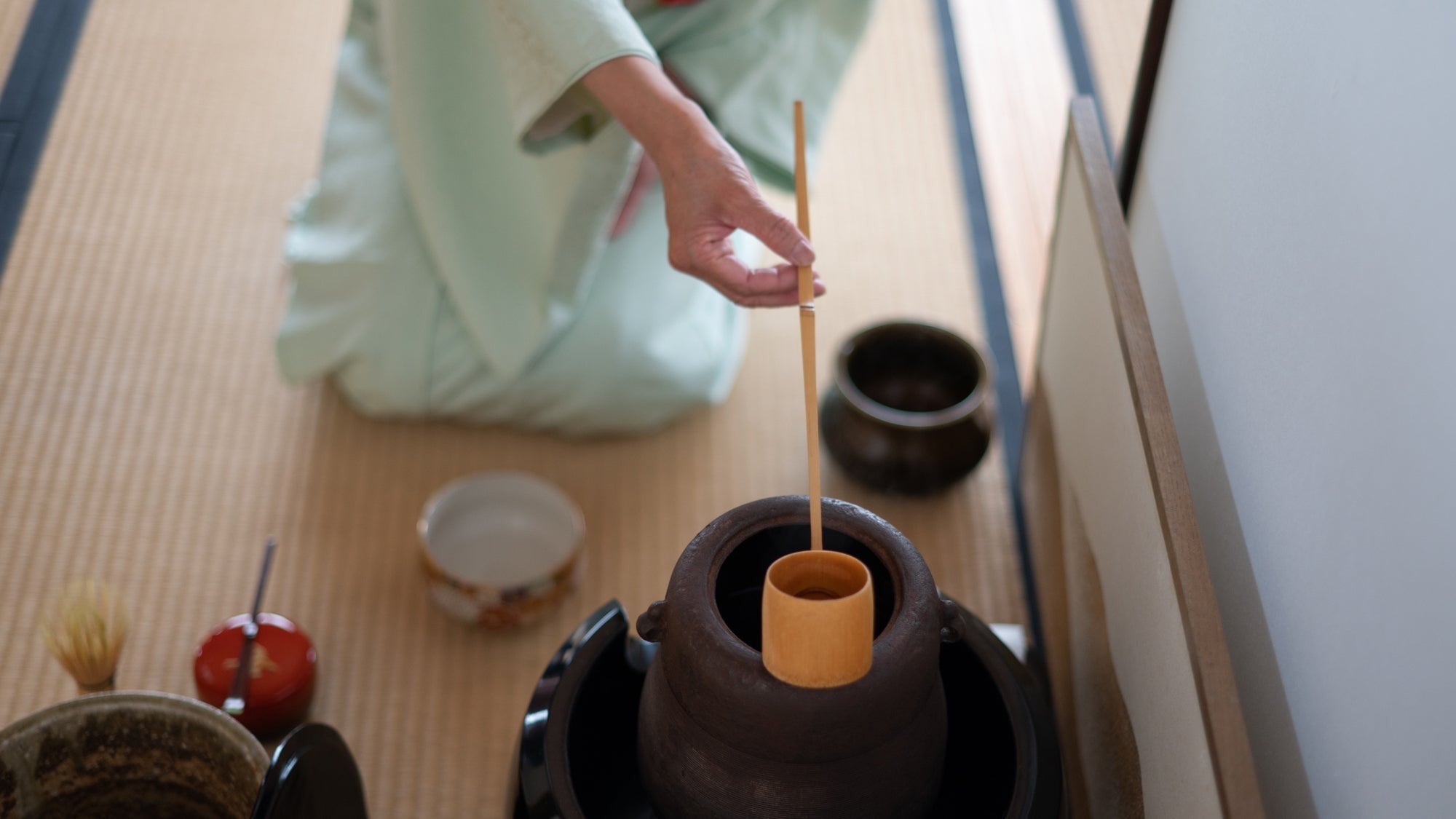
MUSUBI KILN Chado Series: Invitation to the Japanese Tea Ceremony
Written by Team MUSUBI
Welcome to the MUSUBI KILN Chado Series
In this series we introduce our customers to the profound culture of chado and showcase the exquisite tea utensils available in our store, each piece a reflection of the beauty and craftsmanship of Japanese artistry.
The Art and Soul of Chado
The Japanese tea ceremony, also known as chado, meaning "the way of tea," is a traditional ritual influenced by Zen Buddhism in which powdered green tea, or matcha, is ceremonially prepared by a skilled practitioner and served to a small group of guests in a tranquil setting. It is a space where art, hospitality, tradition, and social communion converge, creating an invaluable experience. Join us in exploring the layers of chado, as we uncover its rich heritage, artistic depth, and the beauty of this enduring Japanese tradition.
tables of contents
History and Philosophy

The introduction of Zen Buddhism to Japan in the 12th century further propelled this integration, embedding within the tea ceremony Zen's emphasis on mindfulness, simplicity, and the pursuit of spiritual clarity. Tea gatherings became a symbol of sophistication and cultural appreciation among the warrior class and aristocracy.
The tea master Sen no Rikyu (1522 CE - 1591 CE) is often credited with having the most profound influence on the Japanese tea ceremony. Rikyu emphasized the wabi sabi aesthetic, advocating for a simplicity that reflects the transient and imperfect nature of life. He also advocated the beauty found in the rustic and more common place teaware as opposed to luxury teaware imported from China.
This historical journey has imbued chado with a rich cultural and philosophical heritage, making it a living tradition that encapsulates centuries of Japanese aesthetic values. The practice has been shaped by historical figures, events, and the continuous refinement of its elements, reflecting the dynamic interplay between tradition and innovation.
Harmony and Communion

Through the shared appreciation of the tea, the ceremony, and its elements, chado becomes a conduit for social interaction and cultural exchange, embodying the values of harmony and respect.
Hospitality and Sympathy

The ceremony encourages participants to engage in self-reflection and to appreciate the beauty in simplicity, fostering a deep connection with the present moment and the shared experience.
Admiration for the Artistic World

At the core of the Japanese tea ceremony is a deep appreciation for its presentation: the elegant kimonos worn by practitioners, the architectural beauty of the tea rooms, and the exquisitely crafted tea utensils. Every element is meticulously selected to enrich the ceremony's aesthetic appeal and artistic essence.
The kimono, with its elegant fabric and design, reflects the ceremony's grace and formality.
Tea rooms, or chashitsu, are designed with simplicity and natural materials, promoting peace and introspection. The use of tatami mats, fusuma or shoji "sliding doors," and the tokonoma "alcove" for seasonal decorations highlights the connection with nature and the importance of creating a serene and tranquil ambiance.
Tea utensils, including the chawan "tea bowl," chasen "tea whisk", and chashaku "tea scoop", are not merely tools but revered objects that embody the ceremony's spirit, selected for their beauty, functionality, and symbolic value.
An Invitation to the Realm of Chado

Through the simple act of preparing and sharing tea, chado encapsulates a profound world view. It is a practice that invites participants to slow down, reflect, and find peace in the moment, making it a timeless tradition that continues to resonate in the modern age.







Leave a comment
This site is protected by hCaptcha and the hCaptcha Privacy Policy and Terms of Service apply.